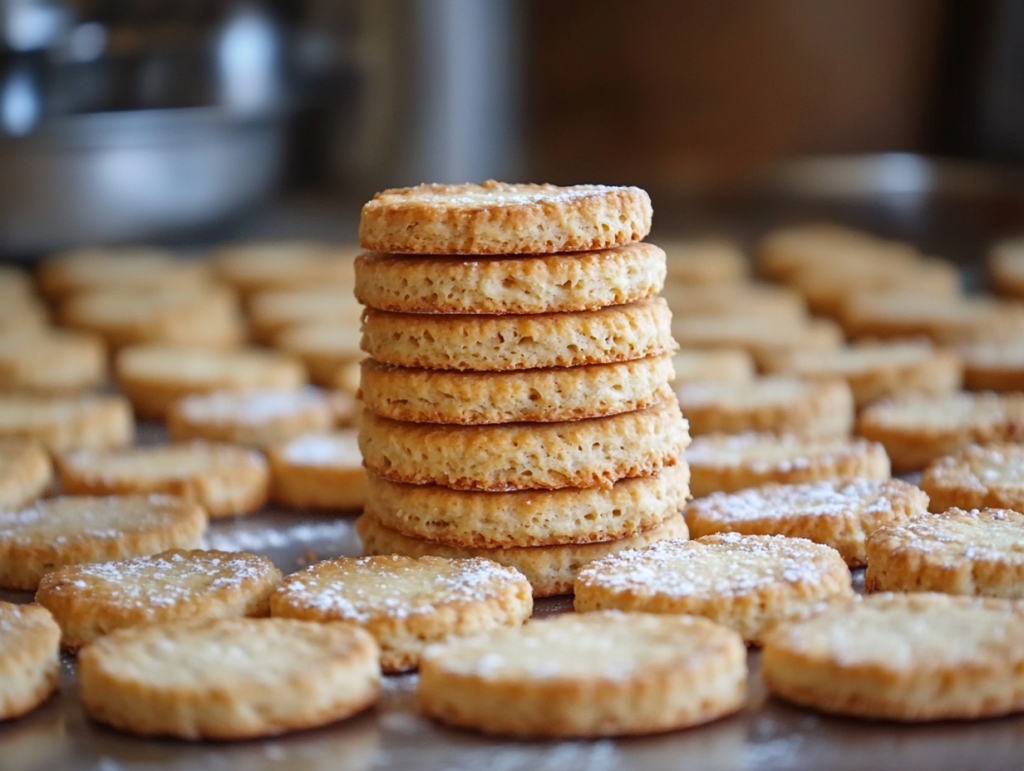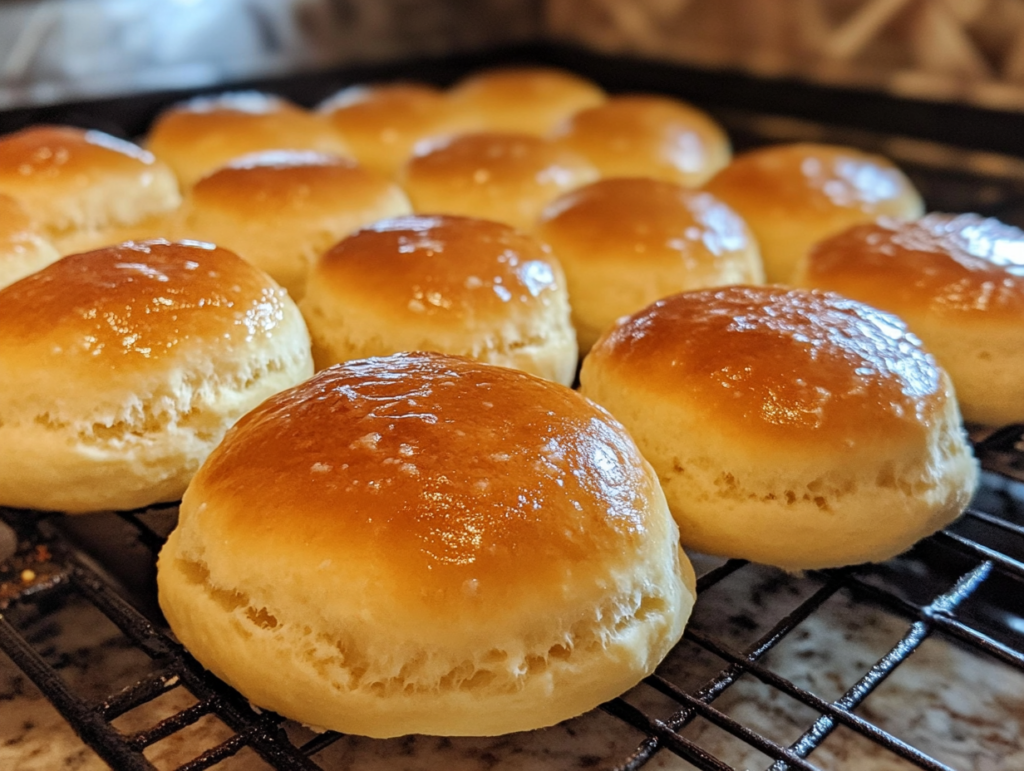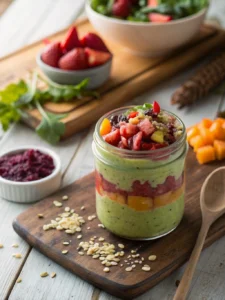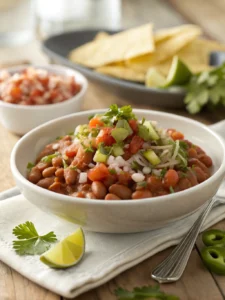Introduction
Did you know that the most delicious, flaky biscuits require just 3 simple ingredients? While most traditional biscuit recipes call for 5-7 ingredients and complicated techniques, this 3 ingredient biscuit recipe defies conventional baking wisdom by delivering superior results with minimal effort. Perfect for busy mornings or last-minute dinner sides, these self-rising flour biscuits have become our readers’ go-to solution when time is limited but quality can’t be compromised. Let’s discover how this streamlined approach creates perfectly tender, golden biscuits every time.
Ingredients List
For this wonderfully simple biscuit recipe, you’ll need just three kitchen staples:
- 2 cups self-rising flour (ensure it’s fresh for optimal rise)
- 1/4 cup cold butter (unsalted preferred, cut into small cubes)
- 3/4 cup cold buttermilk
Possible Substitutions:
- No self-rising flour? Use 2 cups all-purpose flour + 1 tablespoon baking powder + 1/2 teaspoon salt
- No buttermilk? Mix 3/4 cup regular milk with 2 teaspoons white vinegar or lemon juice and let stand for 5 minutes
- Dairy-free option: Use cold plant-based butter and non-dairy milk with vinegar
The cold butter creates those delicious flaky layers, while the tanginess of buttermilk adds depth to these easy biscuits without requiring additional ingredients.
Timing
- Preparation Time: 10 minutes (including mixing and cutting dough)
- Cooking Time: 12-15 minutes
- Total Time: 25 minutes (30% faster than traditional biscuit recipes that typically require additional resting time)
This quick timeline makes these simple biscuit recipes perfect for weekday breakfasts or when you need a last-minute addition to your dinner table.
Step-by-Step Instructions
Step 1: Prepare Your Workspace and Ingredients
Preheat your oven to 450°F (230°C) and line a baking sheet with parchment paper. Measure your ingredients precisely—in this recipe for buttermilk biscuits, proportions matter significantly. Keep your butter and buttermilk in the refrigerator until the moment you need them, as cold ingredients are crucial for flaky layers.
Step 2: Mix the Dry Ingredients
Place the self-rising flour in a large mixing bowl. If you’re using the all-purpose flour substitute, whisk in the baking powder and salt thoroughly to ensure even distribution. This proper mixing prevents biscuits with bitter spots or uneven rise.
Step 3: Cut in the Butter
Add the cold, cubed butter to the flour mixture. Using a pastry cutter, two forks, or your fingertips, work quickly to cut the butter into the flour until the mixture resembles coarse crumbs with pea-sized butter pieces still visible. Those small butter pieces will create steam pockets during baking, resulting in those coveted flaky layers in your easy biscuits.
Step 4: Add the Buttermilk
Create a well in the center of your flour-butter mixture and pour in the cold buttermilk. Using a wooden spoon or rubber spatula, gently fold the mixture together until just combined. The dough will look shaggy and slightly sticky—this is perfect! Overmixing is the enemy of tender biscuits.
Step 5: Form and Cut the Dough
Turn the dough onto a lightly floured surface. Gently pat (don’t roll) the dough into a rectangle about 3/4-inch thick. For the tallest biscuits, fold the dough in thirds like a letter, then pat again to 3/4-inch thickness. This simple folding technique creates extra layers in your 3 ingredient biscuit recipe without requiring additional ingredients.
Step 6: Cut and Arrange Biscuits
Using a 2.5-inch round biscuit cutter or the rim of a drinking glass, press straight down through the dough without twisting (twisting seals the edges and prevents proper rising). Arrange biscuits on your prepared baking sheet with sides touching for soft edges or 1-inch apart for crispy edges.
Step 7: Bake to Golden Perfection
Bake in your preheated oven for 12-15 minutes until the tops are golden brown. For an extra-golden finish, brush the tops with a little melted butter during the last 2 minutes of baking.
Nutritional Information
Per biscuit (based on recipe yielding 8 biscuits):
- Calories: 165
- Total Fat: 6g
- Saturated Fat: 3.5g
- Cholesterol: 15mg
- Sodium: 380mg
- Total Carbohydrates: 24g
- Dietary Fiber: 0.7g
- Sugars: 1g
- Protein: 3.5g
Note: Nutritional values may vary based on specific ingredients and substitutions used.
Healthier Alternatives for the Recipe
Even simple biscuit recipes can be made more nutritious with these smart swaps:
- Use whole wheat self-rising flour for 50% of the flour to add 3g more fiber per serving
- Replace regular butter with olive oil-based butter alternatives to reduce saturated fat by up to 30%
- Add 2 tablespoons of ground flaxseed to the flour mixture for omega-3 fatty acids
- For reduced sodium, make your own self-rising flour mixture using low-sodium baking powder
- Incorporate 1/4 cup of finely grated vegetables like carrots or zucchini for added nutrients and moisture
These modifications maintain the integrity of this easy biscuit recipe while enhancing its nutritional profile.

Serving Suggestions
These versatile 3 ingredient biscuits shine in numerous settings:
- Split and slather with honey butter for a delightful breakfast treat
- Use as the base for strawberry shortcake by adding whipped cream and macerated berries
- Create mini breakfast sandwiches with egg, cheese, and your favorite breakfast meat
- Serve alongside hearty soups or stews to soak up flavorful broths
- Top with sausage gravy for a classic Southern breakfast
- Crumble over fruit fillings for a quick cobbler-style dessert
For an elevated brunch presentation, arrange these self-rising flour biscuits in a cloth-lined basket with small ramekins of various spreads, allowing guests to customize their experience.
Common Mistakes to Avoid
Even with this foolproof 3 ingredient biscuit recipe, watch out for these potential pitfalls:
- Using warm ingredients: Butter and buttermilk must be cold to create proper flakiness. If your kitchen is warm, chill your mixing bowl before starting.
- Overworking the dough: Each extra fold or knead develops gluten, resulting in tough biscuits. Handle the dough minimally for tender results.
- Rolling instead of patting: Rolling pins can compact the dough too firmly. Gentle patting preserves air pockets that contribute to height.
- Using old leavening agents: Self-rising flour loses potency over time. For optimal rise, ensure your flour is less than 6 months old.
- Baking at the wrong temperature: Starting with a hot oven (450°F) is essential for creating steam from the butter quickly, leading to better rise and texture.
Storing Tips for the Recipe
Maximize the freshness of your easy biscuits with these storage strategies:
For Fresh Biscuits:
- Store completely cooled biscuits in an airtight container at room temperature for up to 2 days
- Refresh day-old biscuits by warming in a 300°F oven for 4-5 minutes
For Make-Ahead Options:
- Freeze unbaked cut biscuit dough on a parchment-lined tray until solid, then transfer to freezer bags for up to 3 months
- Bake frozen biscuits directly from the freezer, adding 3-5 minutes to the baking time
- Freeze baked and cooled biscuits in freezer bags for up to 1 month; thaw at room temperature and reheat before serving
For Optimal Freshness:
- Store leftover buttermilk in a glass container to extend its refrigerator life for future batches of this recipe for buttermilk biscuits
Conclusion
This 3 ingredient biscuit recipe proves that exceptional results don’t require complicated methods or lengthy ingredient lists. With just self-rising flour, butter, and buttermilk, you can create impressively flaky, tender biscuits in under 30 minutes. The versatility of these simple biscuits makes them perfect for any meal occasion.
We’d love to hear how your biscuits turned out! Leave a comment below sharing your experience, any adaptations you tried, or questions you might have. Don’t forget to subscribe to our blog for more simplified yet delicious recipes that make home cooking accessible to everyone.
FAQs
Q: Can I make these biscuits without buttermilk? A: Absolutely! While buttermilk adds tanginess to these self-rising flour biscuits, you can create a substitute by adding 2 teaspoons of white vinegar or lemon juice to 3/4 cup regular milk and letting it sit for 5 minutes before using.
Q: Why aren’t my biscuits rising properly? A: The most common causes are using warm ingredients instead of cold ones, overworking the dough, or having outdated self-rising flour where the leavening agents have lost potency.
Q: Can I add other ingredients to this basic recipe? A: Yes! This 3 ingredient biscuit recipe serves as an excellent base. Try adding 1/2 cup of shredded cheese, 2 tablespoons of herbs, or 1 tablespoon of honey for delicious variations while keeping the process simple.
Q: How do I get the tallest, flakiest layers in my biscuits? A: For maximum height and flakiness, fold the dough in thirds like a letter before cutting, keep all ingredients very cold, and make sure your oven is fully preheated to 450°F.
Q: Is there a difference between baking powder biscuits and this 3 ingredient recipe? A: Traditional baking powder biscuits typically include all-purpose flour, baking powder, salt, butter, and milk as separate ingredients. This streamlined version uses self-rising flour (which already contains leavening agents and salt) to achieve the same results with fewer ingredients.
Q: Can I make the dough ahead of time? A: For best results, bake the biscuits immediately after preparing the dough. However, you can freeze the cut, unbaked biscuits and bake them directly from frozen for fresh biscuits anytime.



